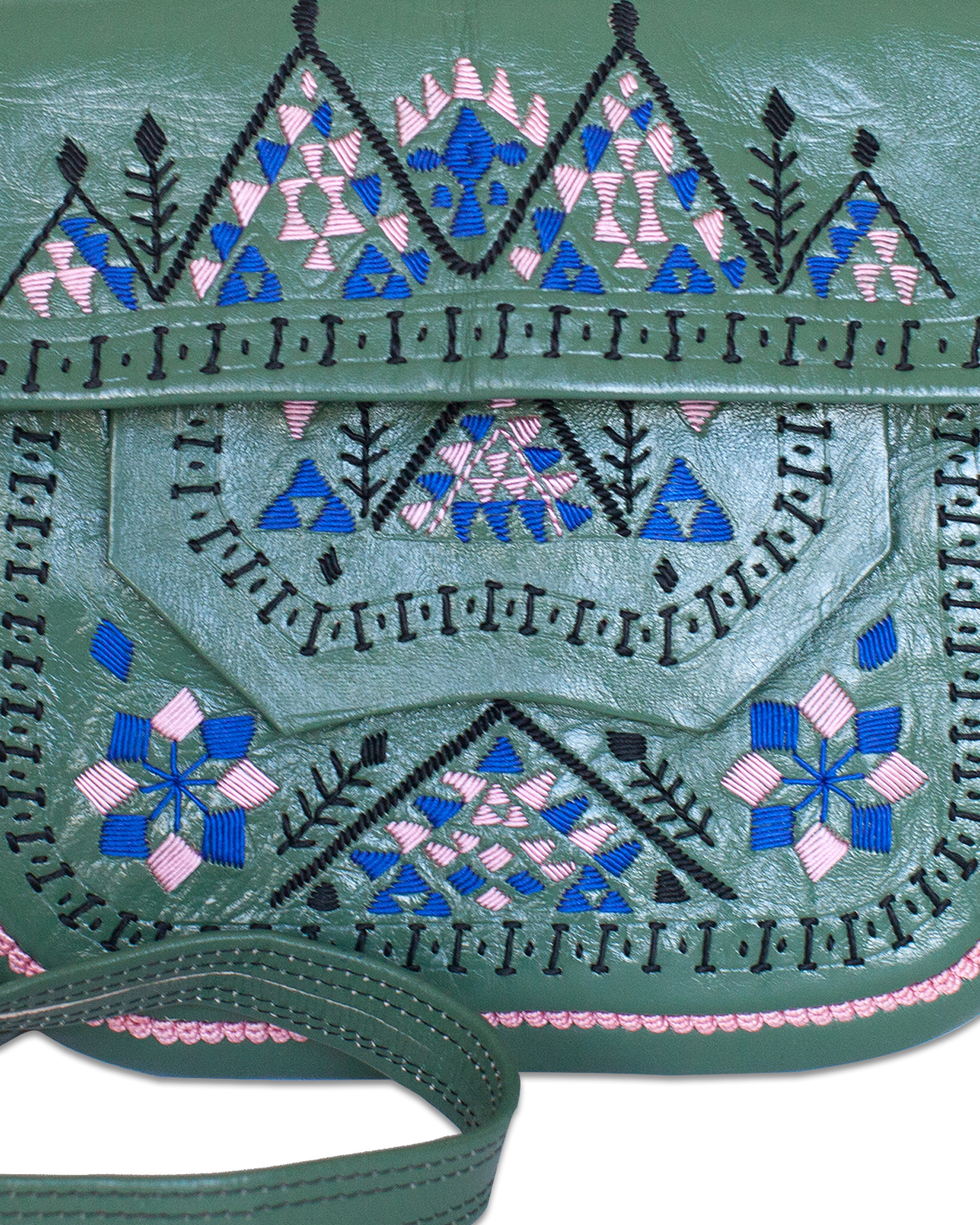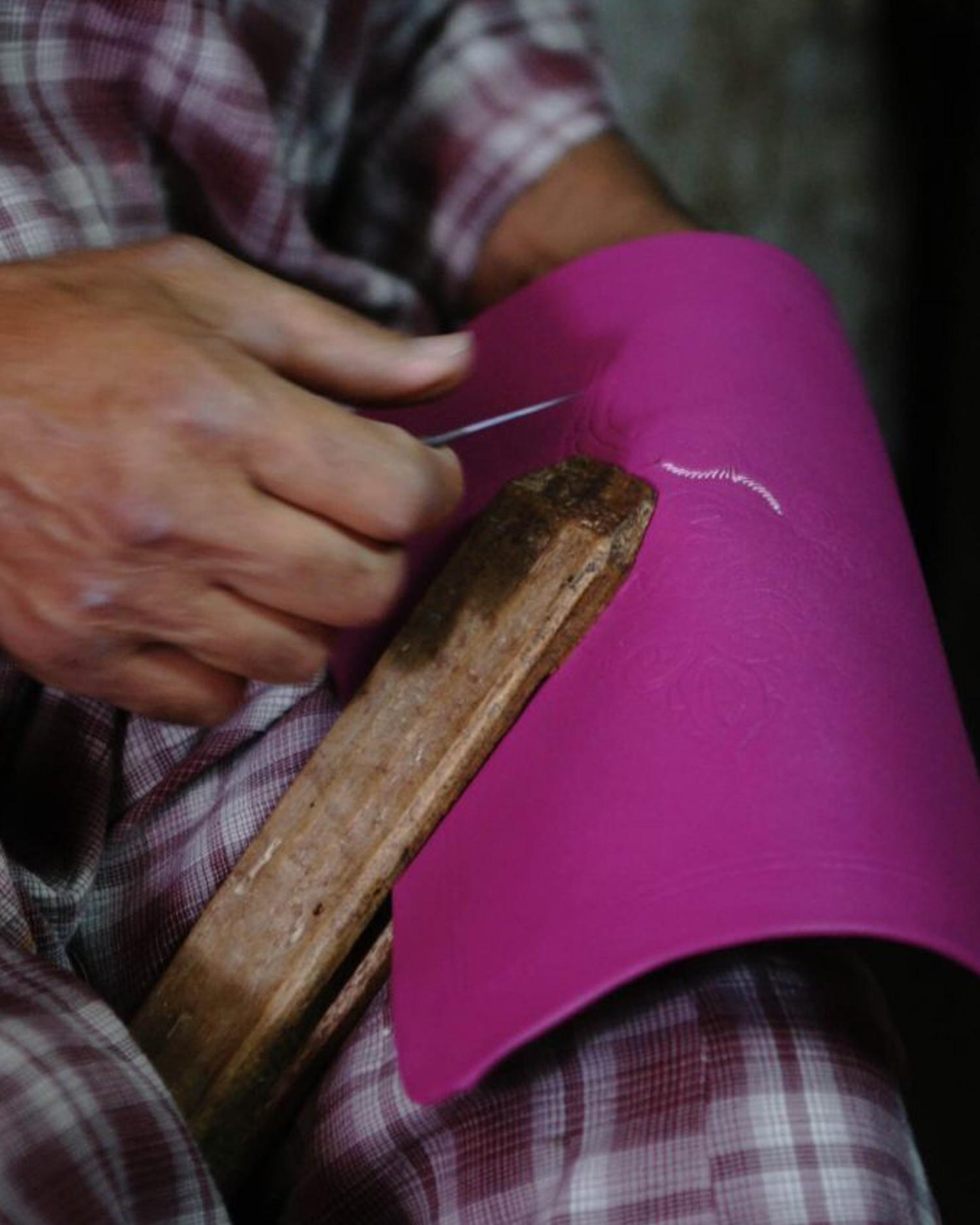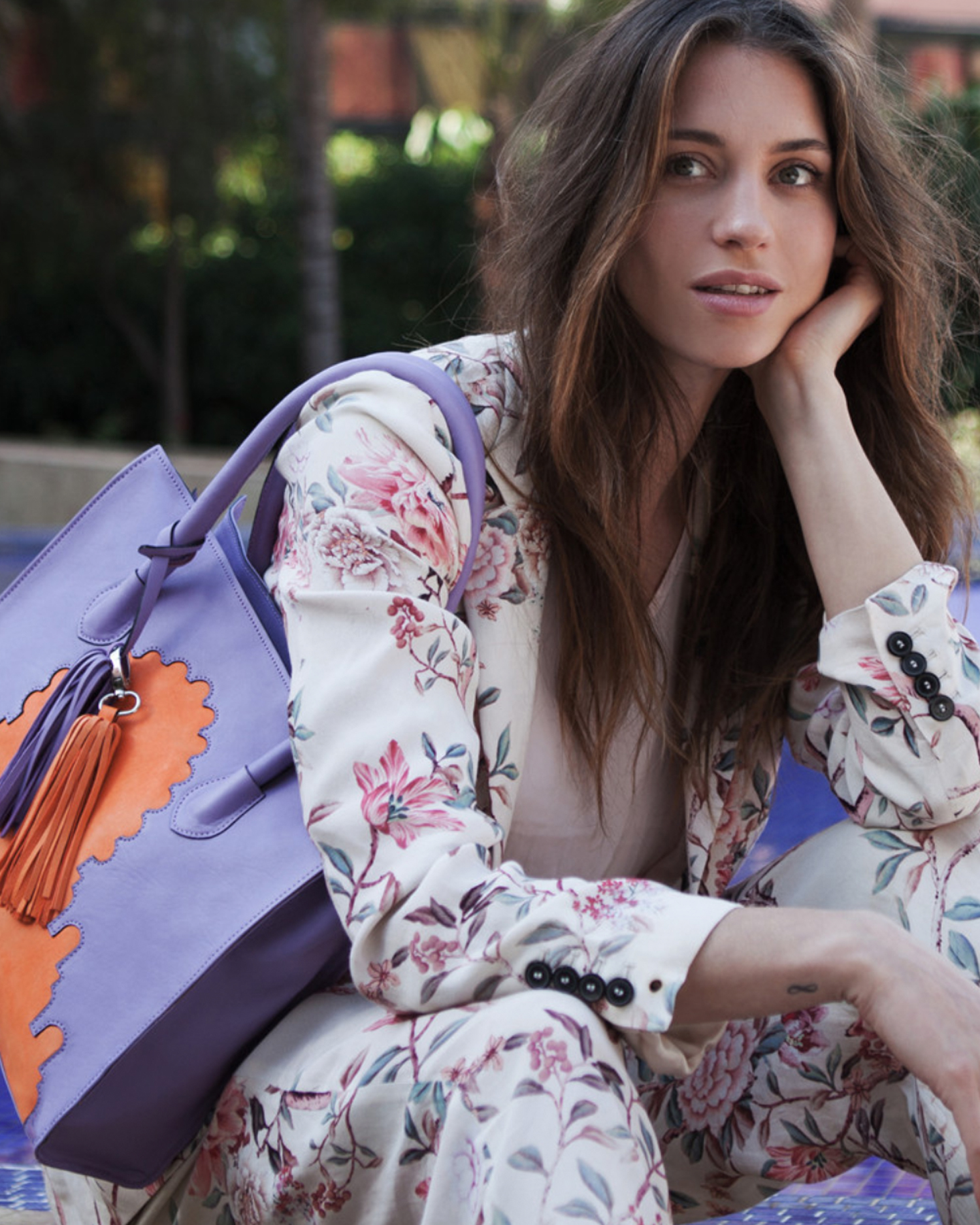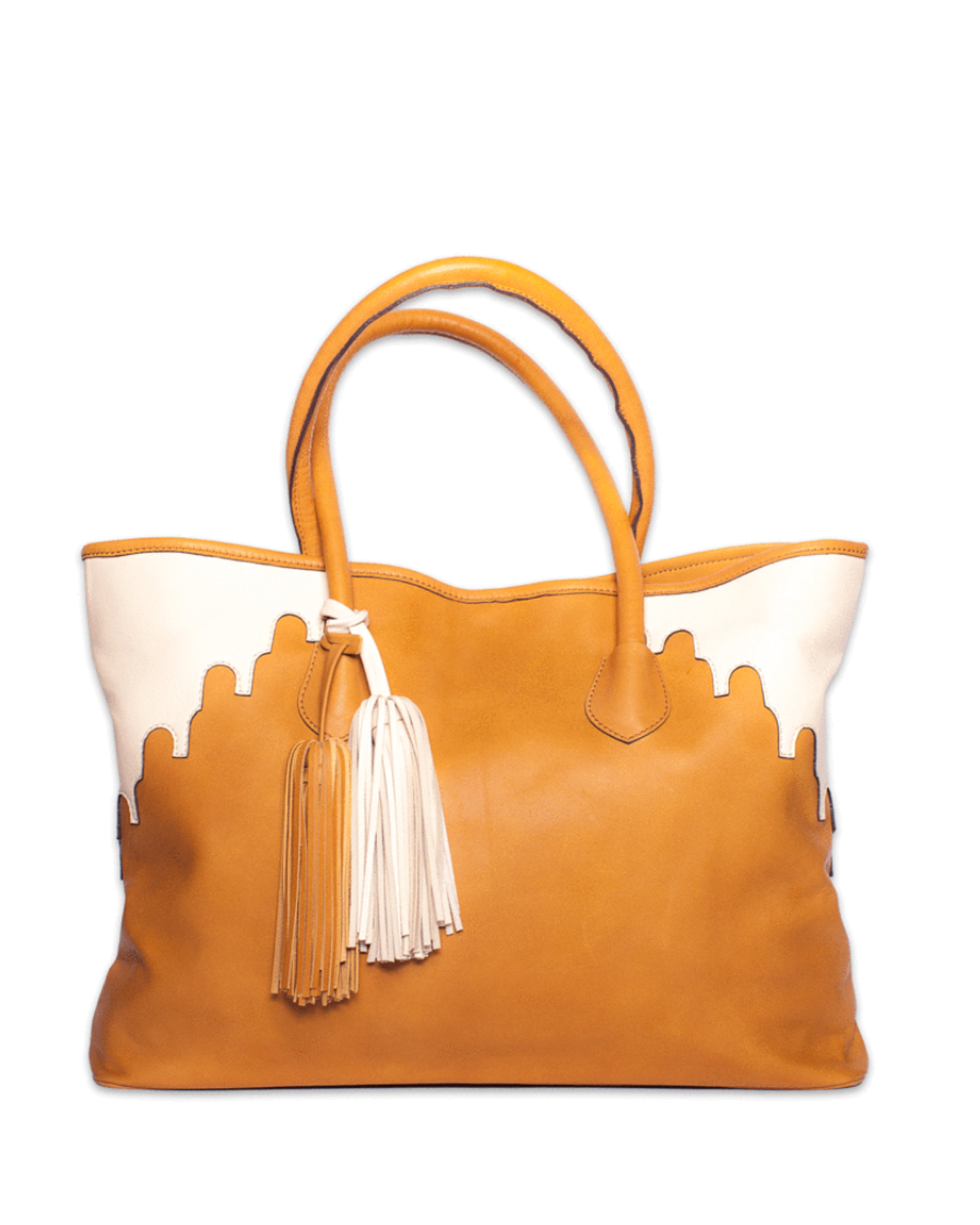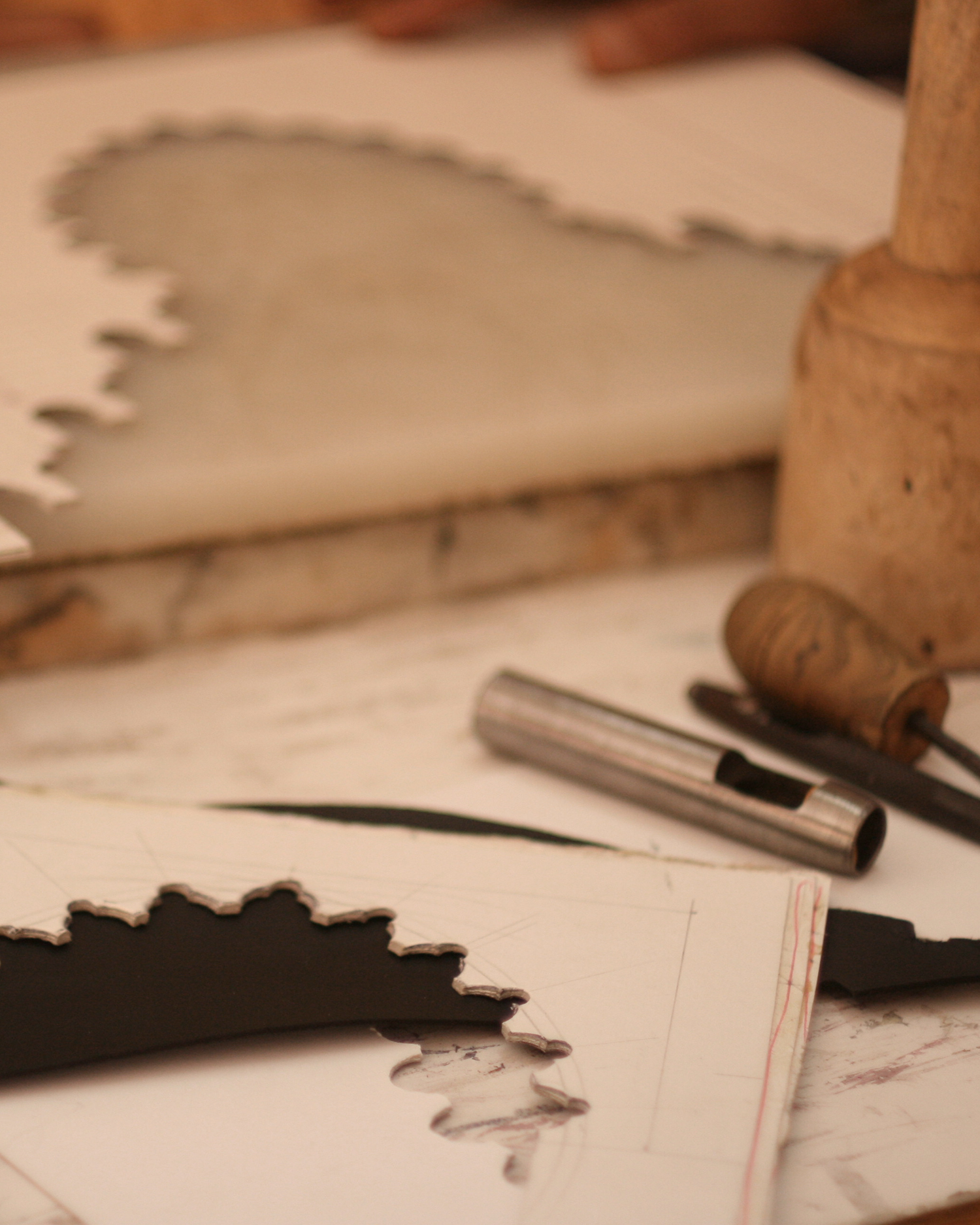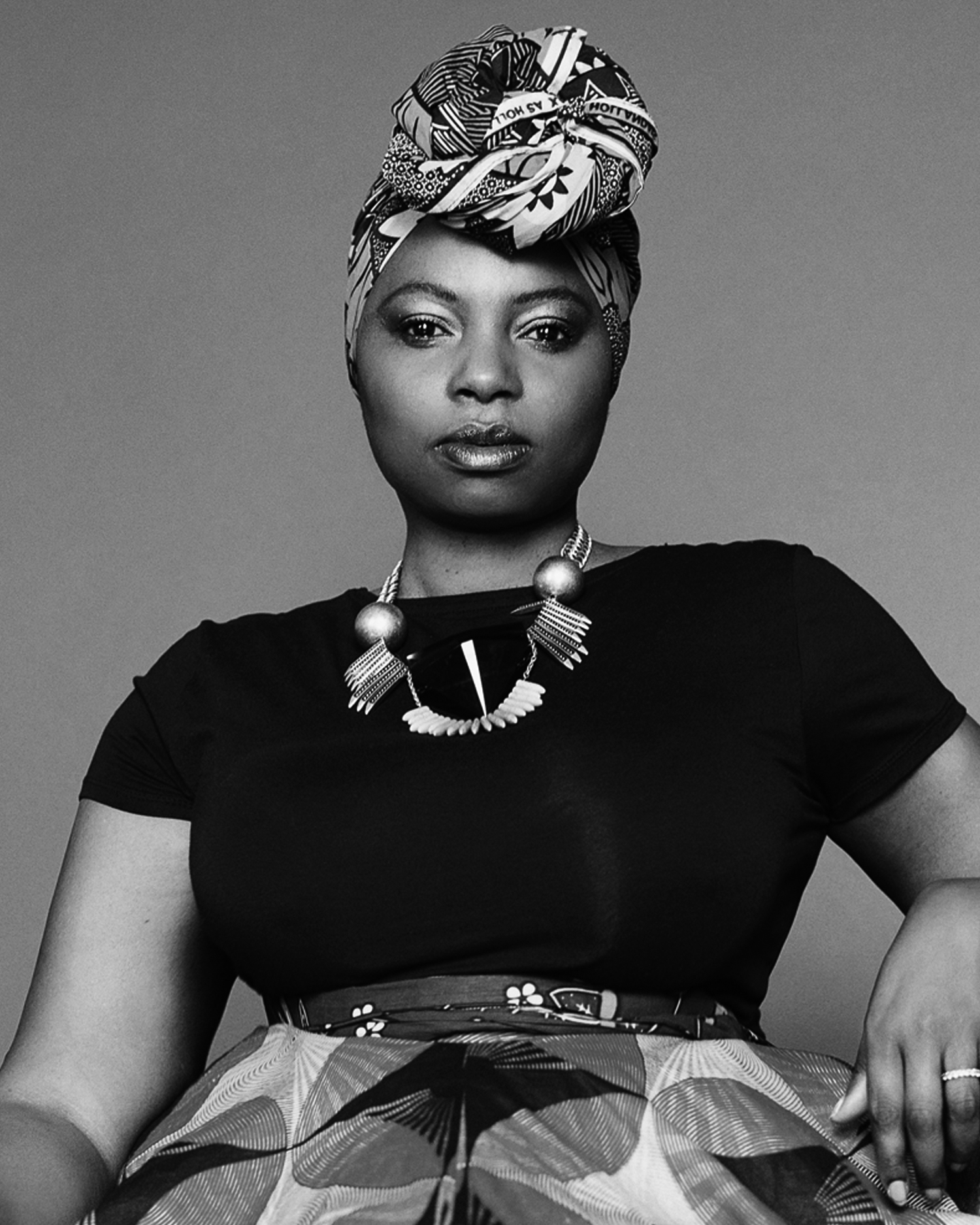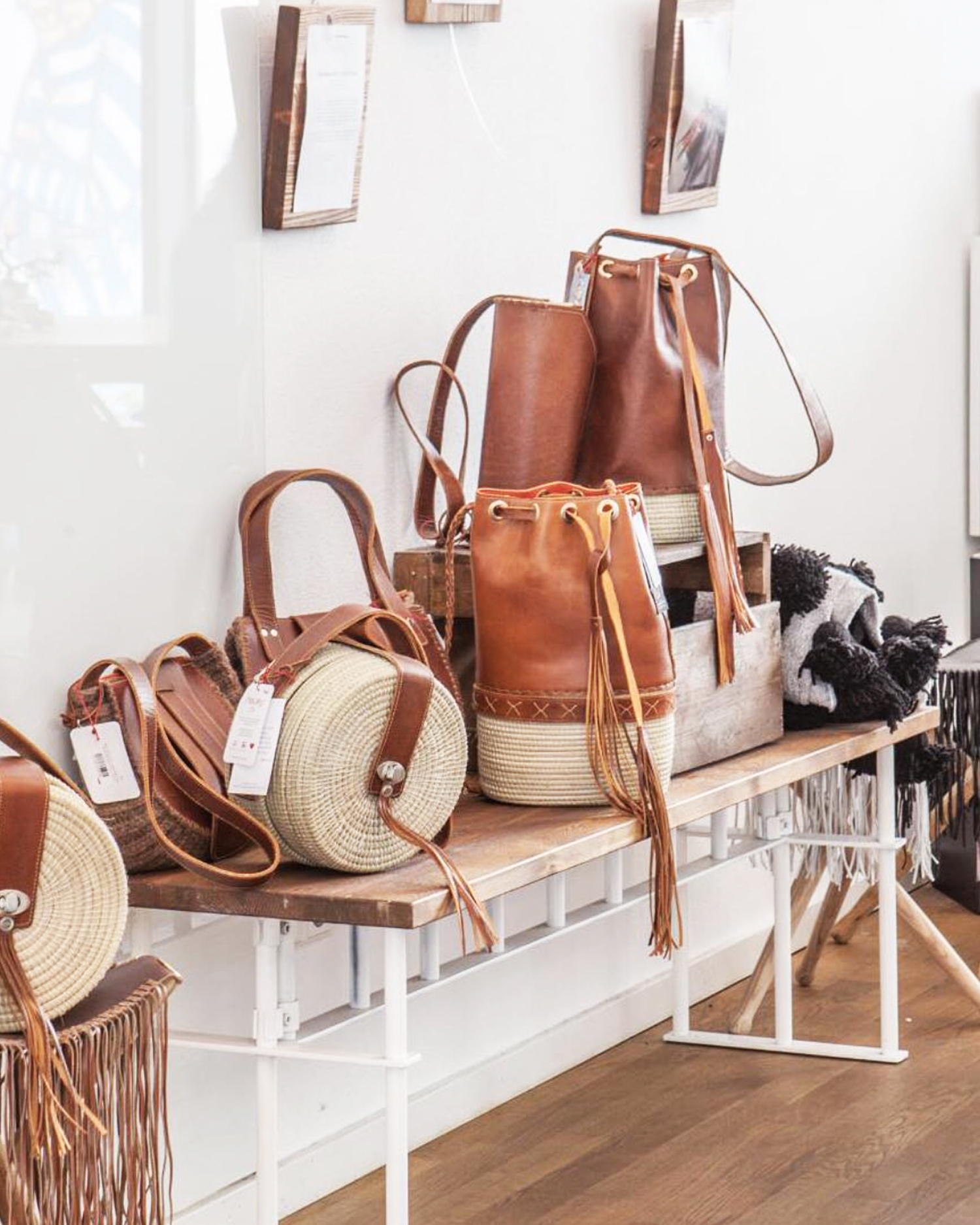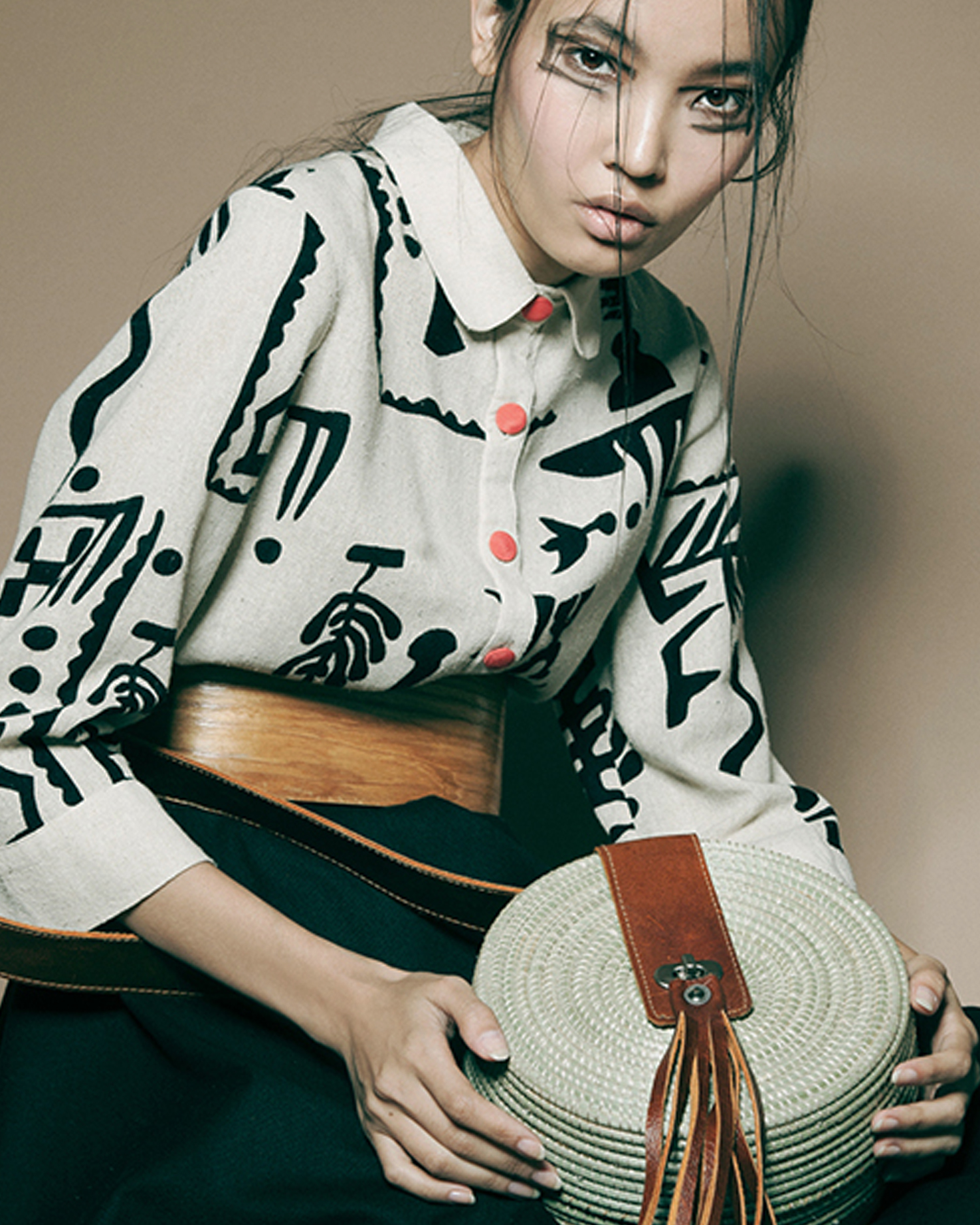Andrea Bury
Empowering change through design with Abury
Andrea Bury founded ABURY to bring together traditional crafts with avant-guarde designers to produce luxury accessories. ABURY supports artisans by empowering them as a business owners and re-investing 50% of profits for education and community projects directly in the communities they work with.
It was a pleasure speaking with Andrea for this in-depth Q&A. I'm still in awe of how she manages to make it all possible. We discuss; how she started ABURY, what it's like working with emerging designers & artisans, branding & communications strategy, and AEG Global's Care Label Project.
JMH Having studied economics and worked worldwide (including London) in advertising, pr, corporate identity, and events what drove you to start a ‘fashion’ brand, and how has your previous experience benefited ABURY?
AB Having spent two years renovating AnaYela (three times World Hotel Award winning hotel) living in Marrakesh and working with artisans I realised how the market for artisan produced products (bags, jewellery, clothing, interior design products) had changed. The price of locally produced products were being forced down by foreign imports, which also meant that the quality of products produced by the artisans had to also decreased in an attempt to compete. Cheaper materials were being used, and true craft skill were beginning to die. The literacy rate is only 50% for women, that alongside the changes meant that prospects for the artisans didn’t look good.
I took a berber bag back to Germany - the first of a 500 piece collection - and friends started wanting them. One friend wanted to have a different strap and this was the moment we both agreed that by fusing modern requirements for functionality and embracing working with the artisan there was potential to make a business that supported the artisan. I approached ESMOD design school and pitched my idea to see if I was on the right track. ABURY was born.
Not being a designer myself, I knew I needed to make the design element of the business integral to the way ABURY works. We work with different designers on every collection rather than driven by a seasonal basis, so therefore still slightly aside of the usual fashion cycle. Every year we have new look as each designer comes in it changes. Having experience in other areas enables me to truly see the value of the designers and artisans and really promote them. Our mission is 'to make it fashionable to care'.
“Our mission is to make it fashionable to care.”
JMH Your initial idea behind renovating AnaYela ‘Place of Inspiration’ was to create a Think Tank, ‘a workshop for innovators and people thinking outside the box’, and to create experiences ‘that truly touch people’. How has your vision worked in practice?
AB The best best proof of concept was the change that I experienced myself. I changed a lot of things in my life because of my experience there. If you are ready to dive into it, to adapt, learn and be curious the impact can be huge. The AnaYela operates as a hotel, with workshops from time to time.
Before we started we talked to psychologists about how to encourage innovation, and found out that you have to take people out of their surroundings where they have previously learnt. Create a certain level of insecurity so they don't associate with their usual patterns of learning. They have to find new patterns to help them get a long. Marrakech is the perfect place because it is super safe but very very different, another world.
JMH ABURY re-invests 50% of its profits in the ABURY Foundation for education and community projects directly to the communities where the products are made (compared with some organisations who make in one country and support social causes in another). Production hours are not only paid in a fair salary, but are also given back in hours of education too. How do you distinguish between business and charitable aims, and how to they work in harmony?
AB I believe even if we pay artisans fairly they still can not make the next step. And I am an entrepreneur not a philanthropist. This is how the idea came up to share the profits. I cannot do what I do without them and visa versa, it’s a fair way of working. So the idea is, that the people/the artisans themselves are earning for their future - for the education of their children, the well, etc.. This is where we invest the money in. And I also take the artisans to the schools (the foundation is supporting) and they see what happens with the income from their bags.
During an interview we asked an artisan (who some would consider poor, sitting in his small atelier) why he likes working with ABURY? His response was because ABURY help the poor people of Morocco. He is proud to work with ABURY, he knows because of his work that children can go to school. There is a direct visible connection between his work and the benefits. It has taken five years to get to that point.
For us it is quite straight forward anything that is production and sales sits with the business and the foundation takes care of education, intercultural, environmental projects.
JMH How have you found being an outsider working within Morocco?
AB Trust is only possible when it is won through time. You have to prove that you are reliable, which is the same as anywhere. In my experience I have found that Moroccans really trust women and Germans. But there are still artisans who don't touch my hand, because they don’t touch women. It is also about accepting. I don't want to revolutionise a culture that has been in existence for thousands of years, it’s a mutual acceptance of each other. The most important thing is that you approach people with openness and respect. No matter where you are in the world this is a good approach. Learn what is close to people hearts. There is no better or worse, you both have things to contribute and learn from each other. After three or four years I was called sister, at that moment you know you are in the family, that it is safe.
JMH What challenges have you found in setting up and growing a business with ethics at its core as opposed to a business purely driving by financial aims?
AB To find an investor for fashion business, is already difficult, for an ethical fashion business is even worse. A lot of ethical or social businesses struggle with scaling, people don't believe in scaling. First you take your own money and then look to friends and family. You don't have a marketing budget etc. And like this it takes a long time, organic growth takes along time. You have to be super patient. Keep believing in what you do, even though its small steps. I’m really lucky to have an amazing team that goes this way with me.
JMH You have a relatively small team around you, and lots of travel involved with ABURY what secrets of success can you share with us on how you manage to achieve so much?
“Trust the team and give responsibility to the people. I am not overseeing everything, I know I’m the bottle neck. It can only grow if you trust your team.”
AB Trust the team and give responsibility to the people. I am not overseeing everything, I know I’m the bottle neck. It can only grow if you trust your team. They may do things differently to how you would but it doesn’t mean to say its better or worse, it’s often better how they do it. You have to let go. Often the constraint in a small founder owned company is the owner.
Networking is also fundamental. I would love to say it’s our structure and processes that help us to achieve efficiently, but its not like this in reality. That said I think we are much more organised than we think we are sometimes.
JMH By allowing opposites to exist and support them to come together rather than keep them apart (like Ying & Yang) we can harmonise an idea rather than creating divide. How do you think that being open to possibilities and combining often opposing ideas such as sustainability and luxury has worked for ABURY?
AB We are a bridge builder. For example we bring together a woman from Zimbabwe (Pam Samasuwo-Nyawiri, pictured above left) and take her to Ecuador. If you consider craft and the time it takes to make something you can see how luxury fits. Luxury is about time, making by hand takes time. So luxury is integrated automatically in our products. There is a person who puts the love in every stitch.
Sourcing materials that are local means that luxury and sustainability are not that far apart from each other if you take the essential definition of luxury and don't look at the luxury definition of the 80s, look at luxury in the definition of now or the future. Today luxury is time, love, something that touches you, that stays with you that has a meaning. I can also be an experience too.
JMH Although named ABURY (using your first initial and last name) the company focus is centred around the designers and artisans creating the collections rather than your story. How intentional is this from a branding perspective, and would you consider featuring yourself more in your online content?
AB This is actually something we’ve been talking about internally. The team think I should have a stronger presence. I initially had a different name for company, I told a good friend about the idea which he thought was great but he didn’t think the name was great. He came back to me with the idea to use my name, with the logo as it stands today. We tested the name using market research and it came back that ABURY had no negative associations, we decided I’d be stupid not to go with it. It wasn't my intention to put myself at the forefront. Now, as we grow, I feel its important to say we are a not just a fashion brand, but we have a mission that’s important to be highlighted. We want to change the world to the better, and we want to inspire, make it easy, make it fun to care. I feel now I have to speak louder, make statements for the cause, and campaign for what we believe in.
JMH Who would you say is your customer, or perhaps different types of customer are?
AB For communications we have defined three different types of women:
40yrs+ later mothers who want to differentiate from mainstream brands, who are fashionable, they what to have an item that tells a story
60yrs+ young at heart, lived the 70s, to them ABURY reflects the spirit of the 70s and they can identify with the stories
25yrs+ who are followers, but not necessary the biggest buyers of the product. They identify with the lifestyle and ethics
JMH Working with numerous designers and artisans across different countries, and working with emerging design talent (with varying levels of skills) through The ABURY Design Experience (ADEx), must be incredibly rewarding but not without it’s challenges. How do you maintain the 'ABURY' brand and high level of and consistent quality?
AB Through the contest we try to find designers that have the skills and mindset to embrace the two months of the exchange. They are all extremely motivated to learn. We mentor a lot, the team is there all the time. We don't interfere in the creative process but we discuss everything, the first designs, functionality and what would work, the product develops yet still stays within the ABURY look and feel. The designer still has the opportunity to bring out their full creative potential without being constrained.
JMH Aside from your website, in what way has technology specifically helped you work with artisans, production and business development?
AB In terms of production we only have a hand driven sewing machine. However in terms of communication it has enabled us to provide an artisan with a smart phone which gives us the ability to see photos, and do production reviews.
JMH Together with AEG Global you recently hosted your 8th edition of FAB Talks (Fashion, Art & Business). What level of impact do you think their Care Label Project could have?
AB I believe they stand behind what they are saying. I think it’s good to say don't over wash. If you read through the statistics over 50% of the ecological footprint of a garment lays in the hand of the consumer, even more than in the hand of the producer. It depends on how often you wear it, how often you wash it, how hot you wash it - or if you just buy and throw stuff away without wearing it, which is the worst thing you can do.
Care labels are often confusing and who knows all the signs ... I don’t... I think to create awareness this campaign is super valuable. We also did a blogger breakfast, it was amazing to see how engaged and how many questions are raised. It really is an area in which we still can create change. People tend to just wash garments how their mothers have told them to. It’s not about the sales at the forefront, but to create awareness, which we can do using our networks. I feel it’s something that has been forgotten in the past and I’m happy to be associated with it. The combination of helping the environment in an easy way that is easy whilst saving yourself money is a win win.
JMH How important is being in Berlin to you (taking into consideration Berlin is known for being pro eco/ethical i.e Ethical Fashion Show Berlin etc) and what is your vision for the future for ABURY and yourself?
AB Berlin is a good place to be, it’s better for ecological rather than ethical. The german market is very eco oriented, it’s not so ethically oriented yet I feel. But it’s perfect to be here, there is a lot of creativity, and people who share the same mission. It’s also still affordable.
The vision for ABURY and myself are connected. What we would like to achieve is that we are recognised for making it fashionable to care. We would like to support big brands on their way to sustainability. For example like collaborating with AEG they have the power to change things. We are the catalyst, similar to procedure in the tech industry where they take start-ups who are the innovators to help big brands to make innovation and change. I also want to create more (design) exchanges, because having seen the impact it has for both people involved - designers and artisans - after they have spent two months together. Design has the power to change the world.
“Design has the power to change the world.”
If designers meet, they have mutual respect from the beginning, they are curious, they want to know what the other one does. You don't need to talk the language because your language is prototyping and drawing. If I look at what is happening in the world at the moment, with people becoming more fearful and aggressive, I think intercultural understanding is really important. This is something that I would like to focus more on perhaps on a personal level and perhaps use the vehicles we have to support this understanding.
JMH What would you need to make more exchanges happen i.e funding?
AB We are currently working on an exciting project which will hopefully help more connections to open up.
JMH Describe your own personal style and what other brands do you respect or buy?
AB In my day-to-day life I would describe my style as comfy, sporty, functional.
Who I really love and turn to for special items, standout pieces is Artsy, he is a designer from a Marrakesh who works with recycled fabrics. Every item is unique as he only makes one of each.
In general I’m not tied to a specific brand, one brand I do wear a lot is an german brand organic Hessnatur. I wouldn’t say it’s all completely ethical or organic clothing, although I try, a mixture of things some of which I’ve had for many years. My wardrobe is small and I try to buy things I wear a lot.
Andrea Bury is an unbelievably driven & inspiring woman, using design & fashion as a medium to create change. By supporting ABURY we support their growing commitment to emerging designers, traditional craftsmen and creating a better future.
NOTES
ABURY Foundation has received the UNESCO endorsement of the German UNESCO Commission that states that ABURY is an innovative model to preserve immaterial cultural world heritage. Amongst many projects ABURY has created Computer Training for Women, Water Well Construction and PortrAid an art aided charity project initiated by the ABURY Foundation and Thomas Rusch.
The ABURY Design Experience (ADEx) aims to preserve artisanal heritage by blending modern design innovation, empowering change through design. The international contest awards emerging designers the opportunity to create an accessory capsule collection using traditional crafts knowledge from different cultures.
Winners
2012 Morocco Marrakesh - Berber Collection by Yannick Hervy French designer
2013 Ecuador - Daniela Franceschini
2014 Morocco Marrakesh - Brazilian designer Mayta Lara Leal
2015 Ecuador - Pam Samasuwo-Nyawiri, a Zimbabwean designer based in the UK was the first winner of ADEx and spent two months Ecuador, creating an amazing bag collection with local artisans
2016 Canadian designer Adam French
2017 Ethiopia - winner TBA
08.06.2017



